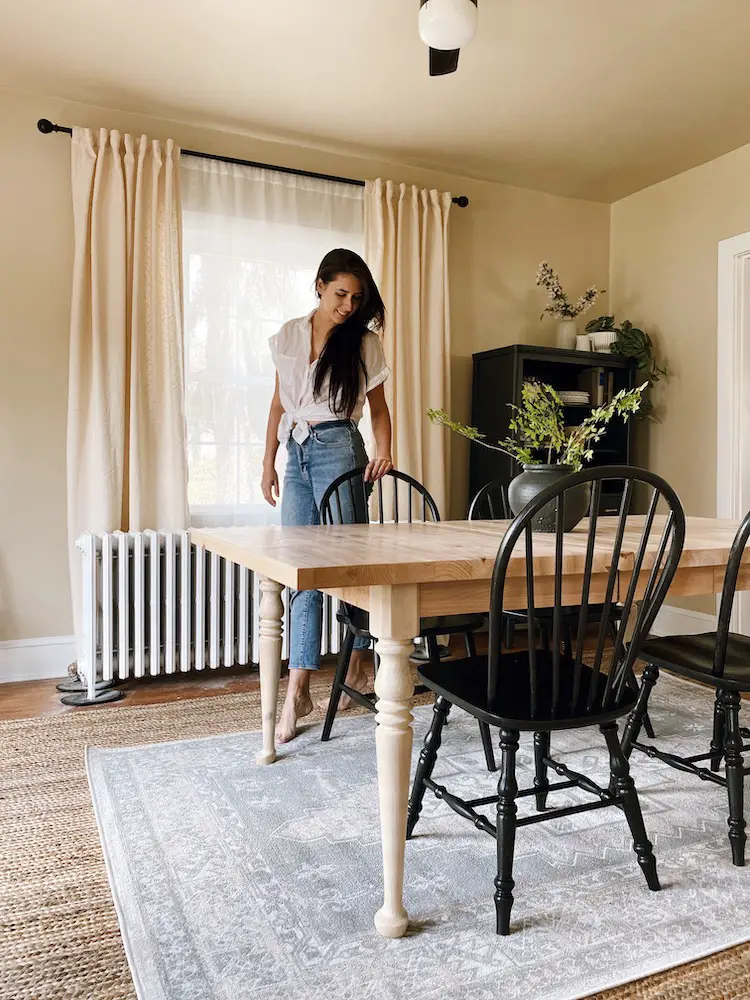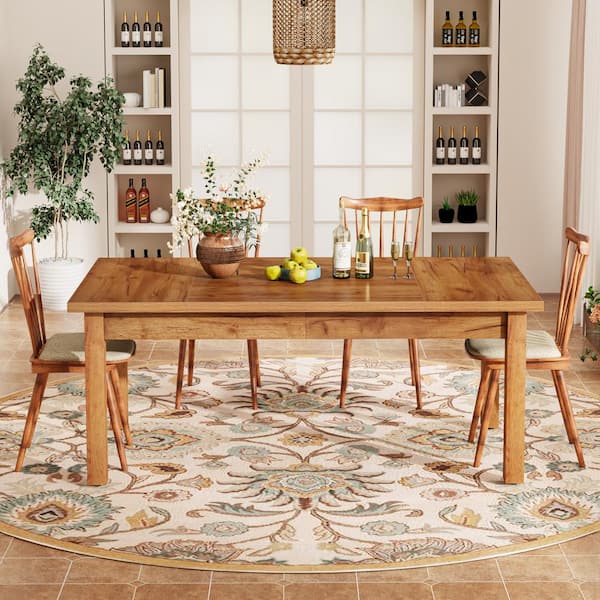Discover the Best Products for Dining Room Table Legs for Every Design
Discover the Best Products for Dining Room Table Legs for Every Design
Blog Article
Choosing the Perfect Eating Table: What Styles Work Best for Your Home?
Selecting the perfect table for your home can be a nuanced procedure that balances aesthetic appeals and functionality. Whether your space leans towards typical sophistication, modern-day minimalism, rustic appeal, or commercial trendy, the variety of styles offered can cater to diverse tastes. Each design uses distinct advantages and obstacles that can either improve or interrupt your dining location's harmony. Understanding just how various products, forms, and sizes connect with your existing decoration is critical. To browse these options properly and locate a table that absolutely complements your home, take into consideration the complying with facets thoroughly.
Examining Your Room
Evaluating the measurements and layout of your dining area is a critical primary step in choosing the perfect dining table. Begin by determining the size and width of the area, making up entrances, home windows, and other building features that could affect table positioning. This guarantees that your table not just fits however also enables comfy activity around it.
Take into consideration the variety of people you normally amuse. A table should accommodate your house's day-to-day demands while offering sufficient adaptability for periodic visitors. Generally of thumb, allot at the very least 24 inches of table width each to guarantee a comfortable eating experience.
It's also important to preserve ideal clearance around the table. Preferably, there need to go to least 36 inches in between the table side and walls or various other furniture, enabling easy gain access to and activity. For rooms where chairs with arms or extra storage devices like buffets are involved, enhancing this clearance to 48 inches is suggested.
Lighting and atmosphere play significant roles too. Make sure that your dining table lines up with existing illumination components or strategy for sufficient lights services. This thorough spatial evaluation guarantees that your dining table not only fits physically yet additionally harmonizes with your area's overall capability and aesthetic.
Popular Table Styles

Traditional eating tables usually feature ornate details, bent legs, and rich wood coatings, evoking a sense of timeless beauty. They are perfect for homes with traditional decor or those aiming to include a touch of refinement to their dining area.
Modern eating tables focus on simplicity and tidy lines, frequently integrating products like glass and steel. These tables are suitable for contemporary spaces, providing a smooth and clean look that complements minimalist style viewpoints.
Rustic eating tables, on the various other hand, emphasize all-natural products and a handmade look - dining room table legs. They commonly include redeemed timber and a troubled finish, creating a warm and welcoming ambience. These tables function well in farmhouse-style blog homes or those looking for a cozy, natural feeling
Industrial dining tables incorporate resources such as metal and timber, typically showcasing a practical aesthetic. This style is appropriate for lofts or city rooms, including a touch of tough appeal and resilience to the dining experience.
Each style offers distinctive benefits, making it important to choose one that aligns with your home's total layout and your personal choices.
Material Options
When choosing an eating table, the option of material plays an essential duty in identifying both the table's looks and capability. Wood, metal, glass, and composite products each offer special benefits and difficulties, making it essential to straighten the product with your home's decor and lifestyle demands.
Timber is a classic and versatile alternative, readily available in varieties such as oak, walnut, and mahogany. Known for its toughness and warmth, timber matches both typical and modern interiors. Nonetheless, it More Help calls for check my source routine upkeep to stop scratches and bending.
Metal tables, typically crafted from stainless steel, light weight aluminum, or functioned iron, are commended for their modern appeal and effectiveness. They are especially fit for commercial or minimal setups but can be susceptible to damages and might really feel cold to the touch.
Glass table bring an air of sophistication and visibility, ideal for smaller sized areas as they produce an impression of even more area. While simple to clean, glass can be prone to smudges and calls for cautious managing to stay clear of chips and cracks.
Composite products, such as MDF and plywood, deal affordable and adjustable services, though they may do not have the durability of natural materials. Selecting the right product guarantees your table is both a functional asset and an aesthetic joy.
Forming and Dimension Considerations
After establishing the proper material for your dining table, the following factor to consider is picking the ideal form and dimension to fit your room. Conversely, rounded tables cultivate a feeling of affection and are excellent for smaller dining areas, urging conversation by getting rid of corners and making everybody really feel equally included.
As a rule of thumb, assign at the very least 24 inches of table size per person to guarantee comfortable dining. Additionally, take into consideration the table's clearance room: there need to be at the very least 36 inches in between the table edge and the wall surfaces or various other furniture. Expanding tables provide versatility if you often host bigger gatherings, supplying additional seats when required without inhabiting added space daily.
Matching Your Decoration
Selecting a table that harmonizes with your existing design is critical in developing a cohesive and inviting area. Begin by evaluating your current interior design style, whether it be contemporary, conventional, rustic, or diverse. The dining table must enhance the total visual, not take on it. As an example, a smooth, minimal table with tidy lines is ideal for a modern home, while a vintage, luxuriant table fits an extra conventional setting.
If your decoration features warm tones and natural materials, think about a wood table to improve the natural feeling. Alternatively, a glass or metal table might be extra ideal in an area dominated by trendy shades and commercial aspects.
Appearance plays an essential role. A rough-hewn, reclaimed timber table can add character to a rustic area, while a sleek marble surface can elevate a glamorous eating location. Ultimately, consider the scale and percentage of the table in regard to the space dimension and existing furniture. A well-matched table not only improves visual allure yet also enhances the total dining experience.

Verdict
Picking the perfect table necessitates careful consideration of space, style, products, shape, and size (dining room table legs). Conventional tables enhance classic interiors with abundant wood finishes, while contemporary tables suit modern setups via glass and steel. Rustic styles introduce heat by means of all-natural products, and industrial styles enhance urban environments with raw elements. Harmonizing the table with existing decor guarantees both performance and aesthetic appeal, adding to a cohesive and visually pleasing eating location.
Report this page